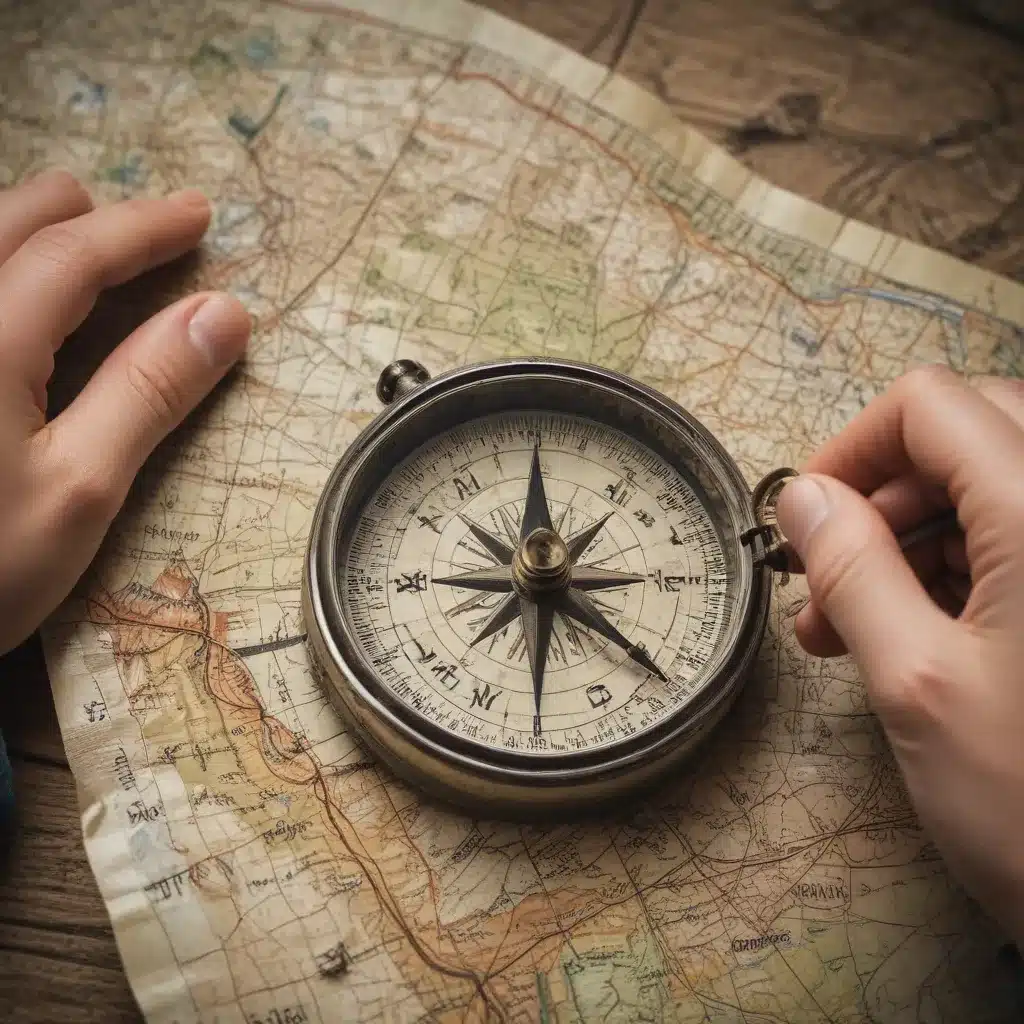
Navigating the Highlands with Confidence
As I sit by the crackling fire in my cozy cabin at Loch Ness Shores, the Scottish Highlands stretching out before me, I can’t help but feel a sense of adventure. These rugged, untamed landscapes have a way of beckoning the explorer within. But before you set out on your Highland odyssey, it’s crucial to master the art of map reading and compass navigation. Trust me, it’s a skill that can truly make or break your outdoor experience.
Understanding the Basics of Map Reading
Let’s start with the map. At first glance, it may seem like a jumble of lines, symbols, and contours, but once you get the hang of it, a map becomes your trusty sidekick, guiding you through the winding glens and rolling hills. The key is to familiarize yourself with the different elements of the map, such as the scale, the legend, and the compass rose.
According to REI, the scale of the map tells you the relationship between the distance on the map and the actual distance on the ground. This is crucial for planning your route and estimating your travel time. The legend, on the other hand, decodes the various symbols and colors used on the map, helping you identify features like roads, trails, and bodies of water.
But the real magic happens when you align your map with the compass rose. This aligns the map with the actual direction you’re facing, allowing you to orient yourself and plan your next move. It’s like having a personal GPS, but without the need for batteries or cell service.
Mastering the Art of Compass Navigation
Now, let’s talk about the compass. This little marvel of engineering is the key to unlocking the secrets of the wilderness. Backpacker magazine explains that the compass has a magnetized needle that always points north, allowing you to determine your direction of travel.
One of the most important things to remember is to hold the compass flat and level. This ensures that the needle can freely move and point to the magnetic north. Then, simply align the orienteering arrow on the compass housing with the direction you want to go, and you’re good to go.
But the real magic happens when you combine the compass with your map. American Hiking Society suggests that by aligning the compass housing with the map’s north-south lines, you can determine your current location and plan your route accordingly.
Putting it All Together: Navigating the Highlands
Imagine this: you’re deep in the heart of the Scottish Highlands, surrounded by towering mountains and ancient forests. The wind is whipping through your hair, and the only sound is the crunch of your boots on the rocky trail. Suddenly, the path forks, and you’re faced with a decision. This is where your map and compass skills come into play.
Ordnance Survey suggests that the first step is to orient your map by aligning it with the compass. Once you’ve got your bearings, you can use the map to identify landmarks and plan your route. Maybe you’ll spot a distant peak that you want to reach, or a winding stream that you need to cross.
As you navigate, be sure to keep a close eye on your compass, adjusting your direction as needed. Snowshoe magazine reminds us that the compass is your constant companion, helping you stay on track and avoid getting lost.
And let’s not forget the thrill of the journey! As you wind your way through the Highlands, take time to soak in the breathtaking scenery. Marvel at the towering Munros, the shimmering lochs, and the ancient Caledonian pines. It’s moments like these that make the effort of navigating worthwhile.
So, the next time you set out to explore the Scottish Highlands, remember the power of the map and compass. With these tools in hand, you’ll be able to navigate with confidence, discover hidden gems, and create memories that will last a lifetime. And who knows, maybe you’ll even stumble upon a cozy cabin at Loch Ness Shores, where you can swap stories and plan your next Highland adventure.

